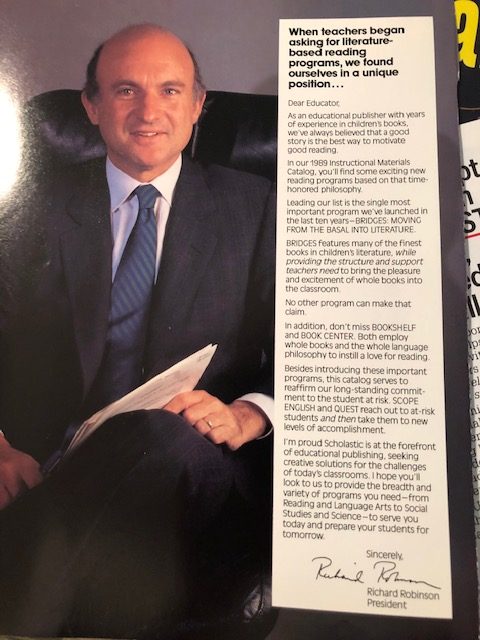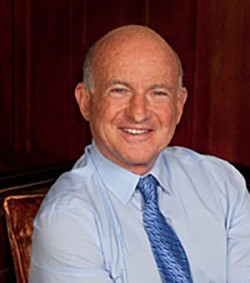–
My local newspaper, The Albany Times-Union, just ran a feature article about me.
Yes, I find that vaguely horrifying but also a good thing, I suppose.
It’s nice to be seen.
It’s funny, in this business people will commonly say things like, “If this book reaches just one kid, impacts just one child, it’s all worth it.”
And I always think: Yeah, no.
I’d like to reach a lot more than that.
Articles like this help.
Thank you, good folks at the Times-Union newspaper for making this happen. Just one question: What’s a newspaper?
Ha, ha, ho. Sorry, that hurts.
Naturally, it took me 48 hours before I could actually force myself to read Jim Shahen’s piece. Today I wrote and thanked him for making me not look too much like a total blithering idiot. Some writer!
Anyway, perhaps my out-of-town fans will enjoy reading this . . .
Delmar author James Preller releases newest children’s book in “Exit 13” series
The quick-paced, supernatural series is a tonal departure from “Upstander,” the book Preller released immediately preceding “Exit 13.” That one deals with the heavier issues of having a sibling struggle substance abuse and being a participant in bullying. For Preller, being able to explore different genres, themes and difficulty levels has been crucial in enabling him to sustain his writing career.
 “I published my first book in 1986; I was 25 then, and I’m 62 now. I’ve spent more than half my life as a published author,” said Preller. “It’s kind of a lot, when you think about it. I’m a little unusual in the breadth of my work. Whatever memo there is about branding yourself, I missed it.
“I published my first book in 1986; I was 25 then, and I’m 62 now. I’ve spent more than half my life as a published author,” said Preller. “It’s kind of a lot, when you think about it. I’m a little unusual in the breadth of my work. Whatever memo there is about branding yourself, I missed it.
“The master plan, to the extent that I have any control over it, is to write quasi-literary middle-grade novels, but also have something more commercial for mass-market release,” he continued. “I’m a survivor, I just keep scrambling around and I’m fortunate to keep coming up with new material.”
A Long Island native, Preller was drawn to children’s literature shortly after graduating from SUNY Oneonta in 1983. Upon graduating, he moved to New York City and waited tables at Beefsteak Charlie’s to make ends meet while seeking lofty literary goals.
Soon after, he got a job at Scholastic and his professional ambitions took a turn.
 “I liked to write poems and took myself very seriously, but poetry wasn’t going to pay the bills at all, plus, I wasn’t very good at it,” he recalled. “I got hired as a junior copywriter at Scholastic and I saw ‘Where the Wild Things Are,’ I realized what a kids’ book could be: anything. A world of possibilities opened to me.”
“I liked to write poems and took myself very seriously, but poetry wasn’t going to pay the bills at all, plus, I wasn’t very good at it,” he recalled. “I got hired as a junior copywriter at Scholastic and I saw ‘Where the Wild Things Are,’ I realized what a kids’ book could be: anything. A world of possibilities opened to me.”
In 1986, he sold, wrote and published his first book, the picture book “Maxx Trax: Avalanche Rescue” about a truck that takes action when an avalanche threatens to destroy the energy station and imperils his family.
“Maxx Trax” eventually sold 1 million copies and Preller’s writing career was underway. He left New York City for the space to start a family in a more affordable climate here in Albany County. From a work standpoint, Preller’s output was varied, writing a mix of early readers and film adaptations — “Space Jam,” “The Iron Giant” and “Godzilla” — for Scholastic. From 1998-2007 or so, he struck gold with the 42-book “Jigsaw Jones” series. Since then, Preller has balanced the lighter, preschool-and-elementary-aged material with books that reflect more serious themes.
 If there’s a throughline from “Maxx Trax” to something like “Upstander,” it’s that Preller tries to base all his work in reality. For his first middle-grade novel “Six Innings,” he relied on his own family’s experience with pediatric cancer as a reference. To add verisimilitude to the mountain hiking-based “Blood Mountain,” he regularly corresponded with a park ranger in Lake Placid. Even “Maxx Trax,” has a real-world connection: Maxx, like Preller, is the youngest of seven siblings.
If there’s a throughline from “Maxx Trax” to something like “Upstander,” it’s that Preller tries to base all his work in reality. For his first middle-grade novel “Six Innings,” he relied on his own family’s experience with pediatric cancer as a reference. To add verisimilitude to the mountain hiking-based “Blood Mountain,” he regularly corresponded with a park ranger in Lake Placid. Even “Maxx Trax,” has a real-world connection: Maxx, like Preller, is the youngest of seven siblings.
“Every book is different and has its own challenges,” he said. “A lot (of the interest in mid-grade literature) was my own children getting older and wanting to write some things with a little more depth and grit in their content. I can go into deeper things than I can with ‘Exit 13’ or (the spooky story series) ‘Scary Tales.’
“I tell kids when I speak at schools, that even if you aren’t writing about a human, whether it’s super-powered trucks like Maxx Trax or writing about a dragon or a wombat, you’re still drawing upon your own emotions and experiences,” Preller added.
 With the new “Exit 13” out in stores, Preller is now looking ahead. He has four more books under contract — a middle-grade novel dealing with a student-athlete coping with post-concussion syndrome and three picture books — that will keep him busy well into next year. And there’s another idea or two percolating for beyond then.
With the new “Exit 13” out in stores, Preller is now looking ahead. He has four more books under contract — a middle-grade novel dealing with a student-athlete coping with post-concussion syndrome and three picture books — that will keep him busy well into next year. And there’s another idea or two percolating for beyond then.
If Preller has it his way, he’ll sustain this level of activity for years to come, and hopefully continue inspiring kids to read.
“I’m 62 and live in a town with a lot of state workers who are retiring,” he said. “Do I want to still be publishing new books at 75? Absolutely.
“I have no ideas or high hopes when a book comes out and I’ve learned to let go of the outcomes,” Preller continued. “I’m very aware that this is entertainment and I just want to give the reader the best possible experience, so they’ll go, ‘Oh, I’ll read another book.’ ”
–
–
–












